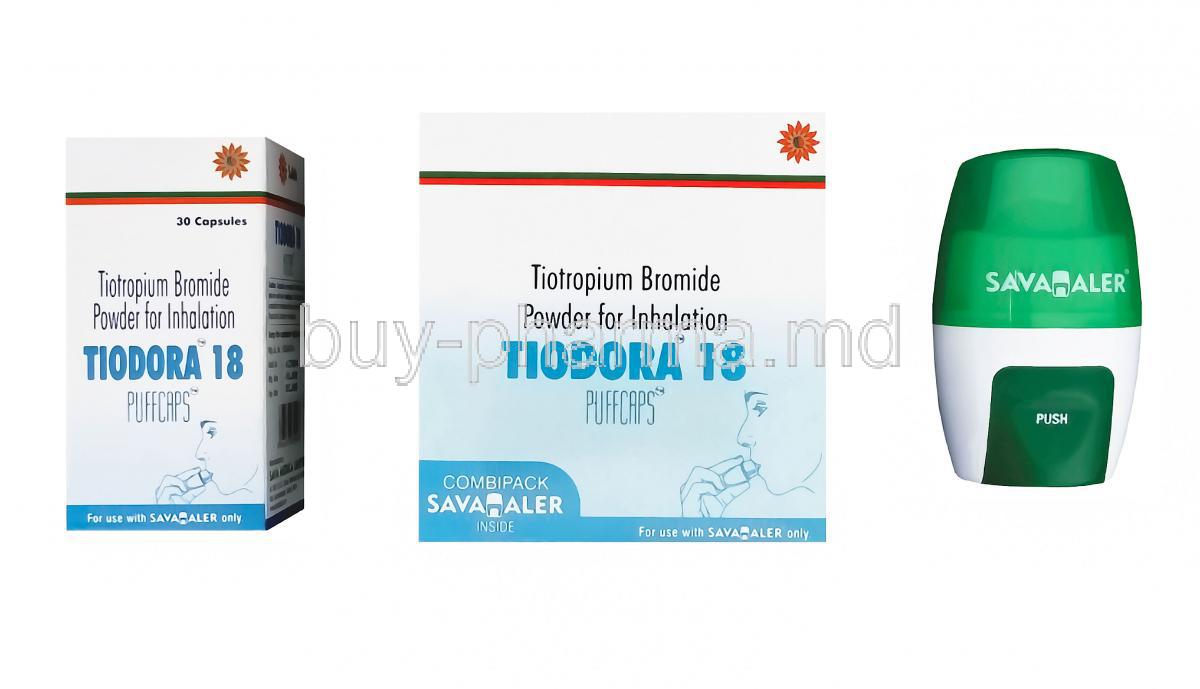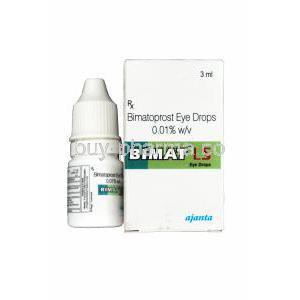Tiotropium Bromide
- 1. Introduction to Tiotropium Bromide
- 2. Composition of Tiotropium Bromide
- 3. Mechanism of Action: How Tiotropium Bromide Works
- 4. Uses of Tiotropium Bromide
- 5. Off-label Uses of Tiotropium Bromide
- 6. Dosage and Administration of Tiotropium Bromide
- 7. Side Effects of Tiotropium Bromide
- 8. Important Precautions with Tiotropium Bromide
- 9. Interaction of Tiotropium Bromide with Other Medications
- 10. Special Considerations for Tiotropium Bromide Administration
- 11. Warnings and Contraindications of Tiotropium Bromide
- 12. Overdose Information on Tiotropium Bromide
- 13. Storage and Handling Precautions for Tiotropium Bromide
- 14. Careful Administration Practices for Tiotropium Bromide
1. Introduction to Tiotropium Bromide
Overview of Tiotropium Bromide
Tiotropium Bromide is a bronchodilator commonly used to improve respiratory conditions like Chronic Obstructive Pulmonary Disease (COPD) and asthma. This medication works by widening air passages to make breathing easier.
Historical Development and Approval
After research in pharmacology Tiotropium Bromide received its initial FDA approval in the early 2000s. Its debut signified a progress, in treating respiratory conditions by introducing a unique mode of operation distinct from current therapies.
2. Composition of Tiotropium Bromide
Active Ingredient Description
Tiotropium Bromide contains a quaternary ammonium compound that specifically acts on muscarinic receptors in the airways.

Formulations Available
- Inhalation Powder
- Soft Mist Inhaler
3. Mechanism of Action: How Tiotropium Bromide Works
Pharmacodynamics
Tiotropium Bromide specifically attaches to and blocks M3 muscarinic receptors in the bronchial smooth muscle, resulting in widening the airways and enhancing airflow.
Biochemical Pathway Interaction
Its function involves blocking the effects of acetylcholine in the lungs, which helps decrease bronchoconstriction and mucus production.
4. Uses of Tiotropium Bromide
-
Primary Indications for Chronic Obstructive Pulmonary Disease (COPD):
-
Benefits in Asthma Management:
5. Off-label Uses of Tiotropium Bromide
Exploration of Non-approved Applications
Case Studies and Clinical Trials Supporting Off-label Use
Recent findings from medical studies indicate its effectiveness in treating uncommon lung conditions, providing healthcare providers with more treatment options.
6. Dosage and Administration of Tiotropium Bromide
Dosage Guidelines for Different Conditions
The typical recommendation for individuals with COPD is to use either a powder inhaler or a mist inhaler once a day.
Methods of Administration
Tiotropium Bromide comes in a powder capsule that you can inhale using a device called a HandiHaler or as a solution for a soft mist inhaler.
Adjustments for Specific Populations
Elderly patients usually don't need dosage changes. It's important to be cautious with patients who have serious kidney problems.
Tiotropium bromide bronchoconstriction treatment
Tiotropium provides bronchodilation and enhances breathing and overall quality of life more effectively than ipratropium and salmeterol for individuals with COPD. Tiotropium usage leads to a decrease in lung hyperinflation both at rest and during physical activity.
7. Side Effects of Tiotropium Bromide
Common Side Effects Encountered
- Dry mouth
- Cough
- Nasopharyngitis

Rare and Serious Adverse Reactions
In some cases, certain individuals might encounter stronger responses, like angioedema, hives, or unexpected bronchospasm.
Managing Side Effects and Symptom Relief
Most of the side effects tend to be mild and can usually be handled with symptomatic care. However, if the symptoms persist or become severe, it is advisable to seek advice.
8. Important Precautions with Tiotropium Bromide
Pre-treatment Assessment
Before starting treatment, it's important to evaluate patients for allergies to anticholinergic medications and check for a history of glaucoma or urinary retention.
Monitoring Requirements During Treatment
It is advisable to keep an eye out for any indications of deteriorating conditions, especially in individuals with a past of serious heart-related issues.
9. Interaction of Tiotropium Bromide with Other Medications
Common Drug Interactions
Tread carefully when combining Tiotropium Bromide with anticholinergic medications, as they can have additional effects. There may also be interactions with drugs, like beta-adrenergic agonists and xanthine derivatives, which could change how Tiotropium Bromide works for you.
Potential Food and Drink Interactions
When taking Tiotropium Bromide, it's important to note that it typically doesn't interact with food. However, drinking alcohol can worsen side effects like feeling dizzy or having trouble with coordination. It's advisable for patients to be mindful of their alcohol consumption while on this medication.
10. Special Considerations for Tiotropium Bromide Administration
Administration to the Elderly
Although usually safe, elderly individuals might experience vulnerability to the overall impacts of Tiotropium Bromide. Therefore, it is crucial to manage doses and monitor for any anticholinergic side effects diligently.
Administration to Pregnant Women and Nursing Mothers
Tiotropium bromide should be used during pregnancy or breastfeeding when the benefits outweigh the risks to the baby. There isn't information available about how it passes into breast milk or its impact on fetal growth.
Administration to Children
The safety and effectiveness of Tiotropium Bromide, in children have not been ultimately confirmed. It is generally advised against using it unless specifically recommended by a healthcare professional.
11. Warnings and Contraindications of Tiotropium Bromide
Specific Health Conditions and Risks
Individuals who have underlying health issues, like narrow-angle glaucoma, prostatic hyperplasia, or bladder neck obstruction, should carefully consider using Tiotropium Bromide as it may potentially worsen these conditions.
When to Avoid Tiotropium Bromide
It is important to steer using this medicine in individuals who have a history of being overly sensitive to Tiotropium or any ingredient in the formula as it could trigger serious allergic responses.
12. Overdose Information on Tiotropium Bromide
Symptoms of Overdose
Signs of taking too much medication can result in worsened side effects, like dry mouth, constipation, and trouble urinating. In serious situations, it might cause blurry vision, rapid heart rate, and heart palpitations.
Emergency Management and Antidotes
If someone overdoses, it's important to get help right away. The treatment mainly aims to provide support for symptoms. It might involve using activated charcoal to limit absorption. There isn't an antidote for Tiotropium Bromide, so keeping an eye on the person and offering care and support is crucial.
13. Storage and Handling Precautions for Tiotropium Bromide
Recommended Storage Conditions
To maintain its effectiveness and prevent deterioration, Store Tiotropium Bromide at room temperature in a dry place away from direct sunlight and moisture. It is advisable to store the medication in its packaging until ready for use to shield it from exposure to air and light.

Safety Measures for Handling
When dealing with Tiotropium Bromide in its powdered form it's important to handle it cautiously to prevent the powder from spreading unintentionally. This could lead to inhalation by people who are not prescribed to use it.
14. Careful Administration Practices for Tiotropium Bromide
Protocol for Hospital and Home Use
In hospitals and medical centers it's crucial to have set procedures in place to make sure that the right administration methods are strictly adhered to for optimal treatment outcomes and reduced risks. When using inhalers at home, it's essential for patients to receive training on how to use them correctly and understand the significance of sticking to the prescribed doses.
Disposal Guidelines and Environmental Concerns
Correctly disposing of Tiotropium Bromide is essential to avoid harming the environment and accidental contact. It's best to discard medications using take-back programs or following guidelines, which typically suggest returning any unused or expired medications to pharmacies.













































